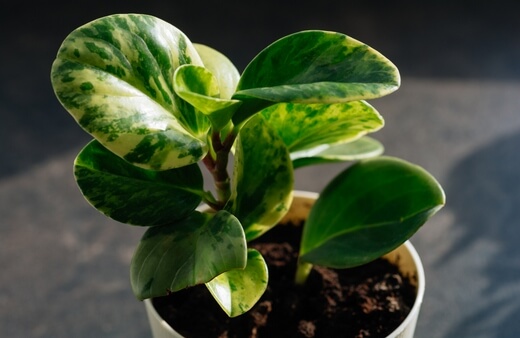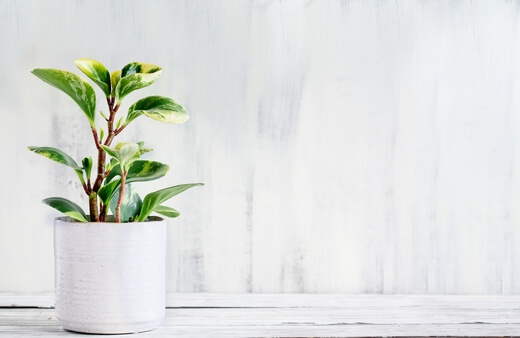It is always good to have plants inside the house, especially if you see them healthy and blooming. There are different varieties of indoor plants that need a unique way of growing, even if they are all called indoor plants.
In this guide, we will go through how to grow and care for the Peperomia obtusifolia.
More...

Some indoor plants need direct sunlight; you can place them indoors but set them up where sunlight can enter, like succulents or cacti plants. Some indoor plants want sheer light from the sun, and you can set them up beside the window where there is medium light that can enter to reflect the sun's rays to the plants, like snake plants.
And depending on the variety of indoor plants, some are drought-tolerant while others are not. It is a must to know your indoor plants before adding them to your plant collection because they deserve to be taken care of correctly and receive the proper care according to their types and varieties.
What is Peperomia obtusifolia?

It is one of the famous plants because of its spoon shape and glossy, succulent-like, fleshy leaves. Its common name is the baby rubber plant, and its botanical name is Peperomia obtusifolia.
Because of its beautiful leaves, this type of plant is well-known for adding elegance and an aesthetic look to homes, and it is also a low-maintenance plant. Honestly, this is one of the easiest plants to take care of, and you can never go wrong with growing them.
Peperomia obtusifolia are also pet-friendly, so there is nothing to worry about if you have pets inside your house.
Baby Rubber Plant's Natural Habitat and Plant Features
With the infant rubber plant, the leaves are everything. It has beautiful, tiny, white-green leaves and rarely blooms. These plants are native to South America and grow in humid tropical rainforest regions of their natural habitat, so they prefer a spot in your home where it's warm and moist, and the light is bright but indirect.
While this baby rubber plant is growing, the upright stems of these plants can develop a flapping habit, and the green algae roots hold well to surfaces, making them ideal for use in hanging containers or on display cases. A good choice for a beginner's houseplant, it is a very tolerant species that will not cause you any trouble.
How to Grow Peperomia obtusifolia
Peperomia obtusifolia Propagation
Use a small pot about four to six inches deep and filled with soilless potting mix. Dip the base of the cutting in the rooting hormone for an increased chance of success. Remove the top of a healthy stem around four inches long and leave at least a few leaves that have one node below the leaves.

Peperomia obtusifolia Care Tips
Light and Watering Needs
Baby rubber plant's leaves can burn, and if you have assorted crop varieties, the unique coloration will start to fade in prolonged, intense sunlight. A partial shade position in an east, south, or west-facing window that doesn't have too much direct afternoon sun usually works well.
Semi-varieties can handle low light conditions, but a little bright, early morning sun promotes growth and is ideal for maximizing leaf color patterns on colorful leaves.
For this Peperomia obtusifolia throughout the growing season, moderate watering is sufficient, like once every two weeks. Before rewatering, let the top few inches of the potting mix dry out. During the winter, you can let the soil dry out further before watering.
Pruning Baby Rubber Plants
Squeezing the tips of the stems helps to encourage new, healthy growth and prevents your plant from looking overly petite. Removing dead and dying leaves also helps direct energy to healthy, growing leaves and keeps your baby rubber plant looking its best.


Get Your Free Guide:
Master Growing Australian Natives eBook
A Must Have Complete Guide for Every Australian Garden
Get Your Free Guide:
Master Growing Australian Natives eBook
A Must Have Complete Guide for Every Australian Garden
Because of its bushy habit, you might want to cut back the leaves occasionally to maintain a nice and clean shape.
Common Problem With Baby Rubber Plants
There is always a problem in the growth process and the same with humans. We grow because of the problems we encounter, and to appreciate how we grow healthy and bloom beautifully, we will endure those problems even if we take good care.
If the leaves of your Peperomia obtusifolia are turning yellow, you might be overwatering your plants. If the leaves drop, your baby rubber plant is in an overly bright light position. If leaves fall off, they are exposed to extreme temperature changes.
Lastly, if the tips of the leaves of your Peperomia obtusifolia are turning brown and the temperature inside your house is too cold, it can kill your plant.
Keen on growing more Peperomia in your home? See our Peperomia growing guides list below:
Start Growing Peperomia obtusifolia in Your Home Today
With all of these informative proper guides for your baby rubber plant, you will undoubtedly be able to grow together and make memories with your lovely Peperomia obtusifolia.
Published on December 5, 2022 by Gary Clarke
Last Updated on September 20, 2025




